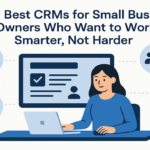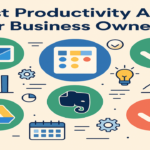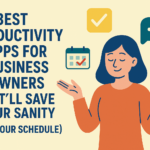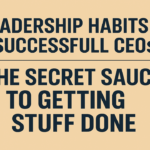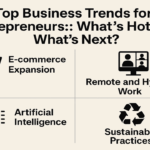Inbound marketing is gaining popularity and being more extensively employed. Companies are using marketing automation software, blogs, email, and other tools to follow the same playbook they’ve followed for years, but in a slightly new way.
Inbound marketing is the best way to get potential customers to notice your business and increase your profits. It, unlike outbound marketing, works by allowing customers to come to you instead of chasing them down.
Inbound marketing is an all-encompassing internet campaign that utilizes many different online marketing tools such as content creation, social media, SEO, and email campaigns to draw in potential customers. Once these tools have been implemented, they work together with the goal of increasing your business’ exposure and drawing in more prospective customers.
What is inbound marketing?
Inbound marketing is a new style of marketing that has emerged as a result of the technological revolution. A comprehension of outbound marketing is essential to comprehend inbound marketing.
However, this is relatively simple because outbound marketing is the type of sales promotion technique that we are all familiar with; the traditional attention-getting methods that include everything from the mail you receive through your door to the advertisements you see on television or hear on the radio to the vexing cold-calling telemarketing techniques. Outbound marketing companies use a purchase, beg, and bug strategy, buying space to plead you to buy and, in the case of phone calls, bugging you if you don’t.
Inbound marketing is the polar opposite of outbound marketing in that instead of interrupting potential customers with a direct approach, businesses entice them with content marketing. This is the creation and distribution of information and media with the sole purpose of interacting with potential purchasers rather than selling directly to them.
The notion is that the company earns its way in by offering helpful and engaging material to entice customers to visit its website, which in today’s digital age usually means getting people to visit its website.
The goal of inbound marketing is to attract customers, and there are several ways to do that. One of the most prevalent is blogging, as the construction of an informative and instructional blog can answer potential consumers’ inquiries and direct them to the company’s website.
Because the modern consumer begins their purchasing experience online, keywords are essential for a company to rank towards the top of a search engine’s results. SEO stands for search engine optimization, and it is the term used to describe this approach.
Social networking sites like Twitter and Facebook have never been more popular than they are now, and a successful firm that implements inbound marketing methods will ensure that a large portion of the interactions on these sites is with themselves. These are the three most common types of inbound marketing, but there are many others, such as video podcasts and e-books, and of course, the company’s actual website, which all of this inbound marketing is pointing to, must be as appealing and practical as possible.
Inbound marketing has several benefits, but probably the most important is that it is cost-effective. Creating a blog or launching a social media-related offer is not a tremendous step to take, and one that is likely to reap large returns, as opposed to investing money on a postal campaign that may be tossed without ever being read or a TV commercial that is likely to be fast-forwarded through.
Inbound marketing may also be measured to check if a company’s plan is on the correct track. Finally, inbound marketing is effective: Companies that have written or used social media have earned clients, according to data.
How does inbound marketing increase your potential?
Inbound marketing is a method of attracting, engaging, and delighting customers to grow a business that provides value and builds trust.
The main objective of inbound marketing is to attract strangers, convert them into leads by getting their contact information, then close them into paying customers.
Inbound marketing generates qualified leads using blogs, social media, and search engines. You also make use of calls-to-action to collect your website visitor’s information such as names and email addresses.
Once you have their contact information, you can begin the process of creating long-lasting relationships with them. This is done by nurturing the relationship with emails that contain valuable content about your company and product or service.
You will also be able to track how prospects are engaging with your content by monitoring their activity on your website through a tool called HubSpot’s free CRM software (HubSpot CRM).
Some examples of inbound marketing include: blogging, social media posts on Facebook, Instagram, Twitter, etc., video posts on Youtube and other platforms, infographics, search engine optimization (SEO), pay per click advertising (PPC), etc.
With the use of technology, the business has evolved. The processes of a business are now better than before. In fact, the way to sell products and services is easier than it was several years back. Businesses are using different methods to market their products and services. One of these methods is Inbound Marketing.
Inbound marketing refers to marketing strategies that involve attracting customers to your brand through content marketing, social media marketing, and online search engine optimization (SEO). With inbound marketing, you are attracting customers to your brand through relevant and valuable content.
There are a number of benefits you can get with inbound marketing, including the following:
- Cost-effective marketing
- Improved customer experience
- Increased revenue
What are the differences between inbound and outbound marketing?
The modern consumer is much more aware and knowledgeable about the items and brands that he or she wants to choose. As a result, in order to be recognized in the thoughts of customers in a positive way, a brand must be seen in the appropriate places at the right time. As a result, the brand embraces many forms in order to take a comprehensive strategy to market.
In the recent past, new marketing routes have emerged, and the prevalence of social media has altered how marketing experts used to see the concept of marketing in the past. The field has become far more dynamic, with the end-user or consumer now acting as the driving force.
This drive for customer-centricity has spawned a variety of marketing techniques that are now widely used. Inbound and outbound marketing are two types of marketing that ensure a brand’s products and services are distributed to customers.
What is inbound marketing and how does it work?
Inbound marketing is a relatively new phenomenon that is commonly referred to as the process through which brands use paid and search engine marketing efforts to help them get discovered by customers. This type of content marketing includes the promotion of a company using blogs, podcasts, e-newsletters, whitepapers, SEO, social media marketing, videos, e-books, and other types of content marketing that are beneficial in bringing customers closer to the brand.
What is outbound marketing and how does it work?
Cold calling, visiting seminars and trade exhibitions, radio and television advertising, print advertisements, sales brochures, spamming, telemarketing, and other traditional marketing approaches, in contrast to inbound marketing methods, all fall under the umbrella of outbound marketing. It is a conventional technique of marketing in which a firm delivers its message to a target demographic in a nutshell.
The advantages of both inbound and outbound marketing
The following are some of the most important advantages of inbound marketing:
- The likelihood of converting website visitors into leads has improved.
- It allows you to turn customers into high-margin repeat customers.
- When compared to outgoing calls, it is less expensive.
- Instead of the brand needing to reach out to the customers, inbound marketing brings the customers to the brand.
- Marketers can use inbound marketing to educate their customers.
- It’s easier to keep track of, and the ROI can be calculated accurately.
The following are some of the most important advantages of outbound marketing:
- It gives you the chance to appeal to a large number of people.
- Outbound marketing has a higher chance of generating leads because it allows you to Personalize your approach to the prospects.
- Assists in the creation of a brand story
Marketing can be a powerful strategy for generating leads. Lead generation can be accomplished through both inbound and outbound marketing. Organizations spend 90% of their marketing budget on outward marketing and only 10% on inbound marketing. This ratio will need to change in the near future, as today’s consumers have gone to the internet rather than traditional media.
What are the important steps to inbound marketing automation for business growth?
Lead nurturing is a method and system that produces a fully qualified prospect who is ready to be handed over to your sales team for the final stages of developing a new client. It’s built around a sequence of emails that help your target audience’s inquiry process as they look for a solution to their problem.
Your organization can go through the leads created with inbound marketing automation and develop highly qualified prospects, putting you at the top of their list as a prospective solution provider.
When your company’s marketing efforts create a lead, you’ll need to follow up to figure out what the problem is and whether the solution you’re offering is appropriate. This can, of course, be done manually.
Your organization can hire someone to conduct research and call leads, deal with gatekeepers, and leave voicemail messages, and although this can and does work, it is time-consuming and costly. “Only 25% of leads are legitimate and should go to sales,” according to popular belief.
Your organization will save money by selecting and qualifying leads so that your sales force spends time with qualified prospects ready to buy if you run a well-executed and completely automated online lead nurturing campaign.
Your organization will save money by sorting and qualifying leads with a well-executed and fully automated online lead nurturing campaign, allowing your sales force to spend more time with qualified prospects ready to buy. If all other factors remain constant, this should lead to shorter sales cycles, higher closing performance, and increased profitability. So, how do you go about creating an online lead nurturing campaign?
5 Steps to creating a lead nurturing campaign on the internet:
- Establish your objectives- This step will guide the rest of your campaign, including the target audience, relevant content, and how you’ll track your progress.
- Identify your target demographic and the problem your solution may address for them. Your organization may already have a defined marketing/buyer persona, but if not, you should conduct some study on the topic. Be as specific as possible; this step clarifies the campaign’s substance.
- Choose the campaign’s content- This doesn’t necessarily mean you have to create new content because you may already have some on hand; what matters is that you provide value. Instead of attempting to close a deal, assist your leads’ inquiry process by providing additional information that you believe will actually benefit them. Case studies, webinars, videos, prior blog articles, podcasts, and so on are some examples. Special promos and demo offers can be included in your campaign, but they shouldn’t be your first point of contact.
- Establish a timeline for sending your emails, this will vary depending on your company’s typical sales cycle; the shorter the cycle, the closer you can space your follow-ups; the longer the cycle, the further apart you should space them. Allow the deal to unfold naturally; patience is a virtue! If your cycle is 60 days, for example, you would want to space your campaign out over days 1, 15, and 25 after the lead conversion.
- Measure and refine: While this is the final step in the process, it is perhaps the most crucial for ongoing inbound marketing automation and lead nurturing. Your analytics program’s ability to show what’s working and what isn’t is crucial to achieving the objectives you specified in step one. Make sure you can track what happens with each email so you can enhance your campaign over time.
What can you anticipate from your inbound marketing automation project? To begin, keep in mind that this is a process, not an event. You might be disappointed if you expect to start off with a boom! Prepare to stay the course and focus on improving your performance at each step.
Over time, you’ll see that your investment pays off in the following ways:
- A higher percentage of leads are converted into qualified prospects.
- Client development costs are reduced.
- Sales cycles that are shorter
- Real business growth as a result of your online activities!
The long-term value of inbound marketing automation is one of its most effective features. Once you’ve created a successful campaign, it will keep working for you indefinitely. Of course, based on the data from your analytics, you may want to tweak along the way, but once it’s set up, your lead nurturing will continue to work for you, with no pay raises, no vacation time, and no complaints, 24 hours a day, seven days a week.
How to hire an inbound marketing consulting firm?
Over the last few years, the use of online marketing, specifically the employment of an inbound marketing consulting agency, has increased steadily for businesses of all sizes, from one-person home-based businesses to Fortune 100 corporations.
If you’re wanting to outsource your Internet marketing services, rather than only looking at search engine optimization services, a more all-inclusive inbound marketing plan may be your best option, regardless of the size of your company.
“What’s the difference?” you might wonder. Search engine optimization, search engine marketing, creative content marketing, blogging, and optimized online press release authoring are all examples of inbound tactics. The key to making all of these marketing channels effective is to incorporate specific keyword research into each item.
Inbound marketing consulting services, on the other hand, are not all made equal. The number of so-called Internet marketing consultants has increased in tandem with the meteoric expansion of internet marketing.
Knowing what to look for when selecting the proper inbound marketing consulting agency can undoubtedly help you out enormously in the long run, just like any other business strategy that will help you save important time that you can focus on more productive measures.
So, what are some of the qualities to seek in a top-tier marketing consultant? The following are the most important criteria to consider: Is there a list of clientele to whom the organization provides monthly marketing services? This will tell you right away if they are well-liked and capable of retaining customers.
Are the consultants educated in e-commerce, organizational and industrial psychology, business, and marketing? Does your marketing consulting firm have consultants who teach others via webinars, university/college courses, or continuing education classes? Being a subject matter expert requires not only knowledge of the subject and the ability to accomplish a task, but also the ability to educate others on how to do so.
Are industry journal papers, books, e-books, and manuals published on a regular basis by the consultants? Blogging is not included in this. Certificates: Having multiple professional certifications in one’s chosen field is a sign of a true professional. Examine certificates such as Certified Inbound Marketing Consultant, Certified Inbound Marketing Educator, and Social Media Consultant, as well as top Internet marketing University programs.
What are the tips to follow in order to increase your potential with inbound marketing?
Inbound marketing is one of the newest and most effective ways to reach your audience. The key to using inbound marketing effectively, though, is knowing how to use it. Here are some tips for mastering inbound marketing.
1) Inbound marketing requires a robust and flexible technology platform.
2) You need to be able to create a variety of content.
3) Because inbound marketing is so interactive, you need to be willing to engage with your audience.
4) You need to research your audience and their behavior.
5) You should be willing to adapt your strategy as needed.
Segment your audience
When it comes to inbound marketing, you want to figure out who you’re talking to. You need to group your potential customers into different categories so that you can speak directly to them by showing them the information that’s relevant to their specific needs.
For example, if your company sells software for IT professionals, you might want to create an inbound marketing campaign that focuses on the features of your product that appeal specifically to IT professionals, instead of trying to appeal to everyone who could potentially use your software. In a sense, this means tailoring what you put out there based on who will see it. By doing so, you’ll be able to make sure that people only see things about your product that they actually care about.
Create content that’s relevant
When it comes time for creating content for your inbound marketing campaign, make sure the content is relevant and useful. You don’t want people searching for something online.
Conclusion
When it comes to increasing your potential with inbound marketing, the most important thing you can do is to dedicate time to researching and understanding your audience. In order to have an effective inbound marketing strategy, you need to understand what kinds of content will appeal to them.
Your audience members are all unique individuals who have different careers, interests, and goals. This means that they probably also have different needs and problems that they’re looking for help with. If you don’t know who they are, you won’t be able to speak directly to them, or help them solve their problems.
The best way to understand your audience is by using personas. Personas are fictional characters that represent a segment of your target audience based on demographic information like age and gender, but also personality traits and values so that you can really get into their heads. They should be backed up by real data about your clients or prospects.
It’s also important to note that personas should not be one-size-fits-all models, you can’t assume that every member of your target audience is exactly like every other member. Each persona should represent a group of people who are very similar in terms of demographics and needs, but there will likely be some variation within each group.


